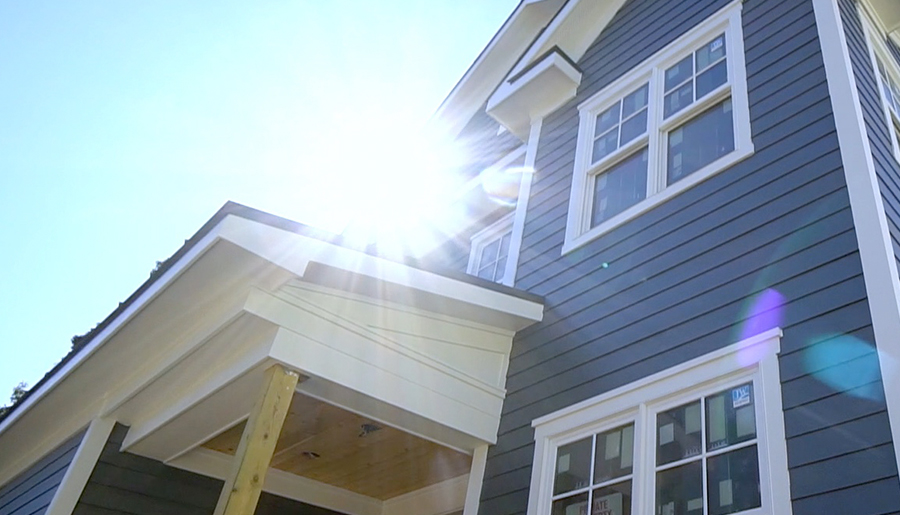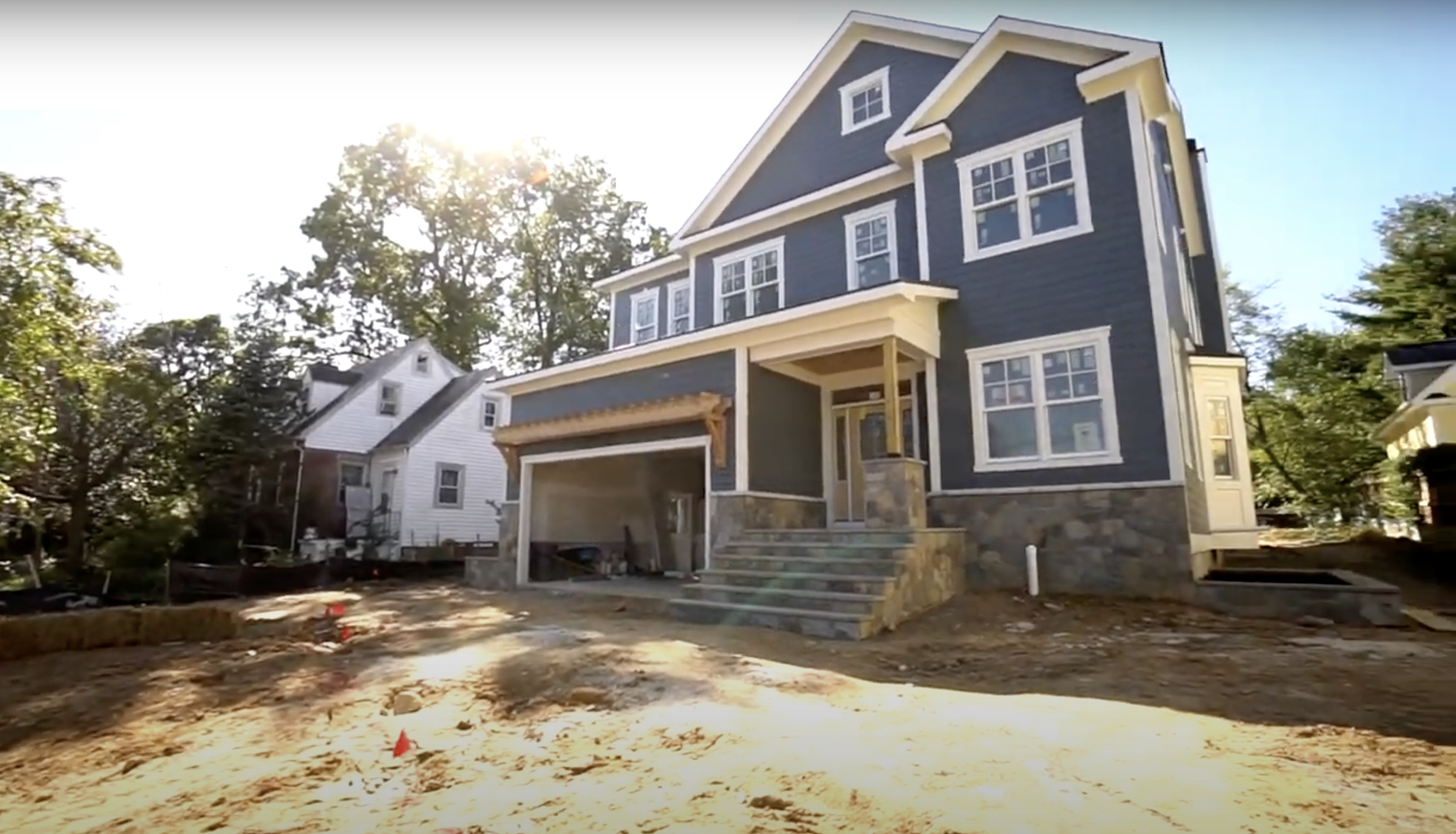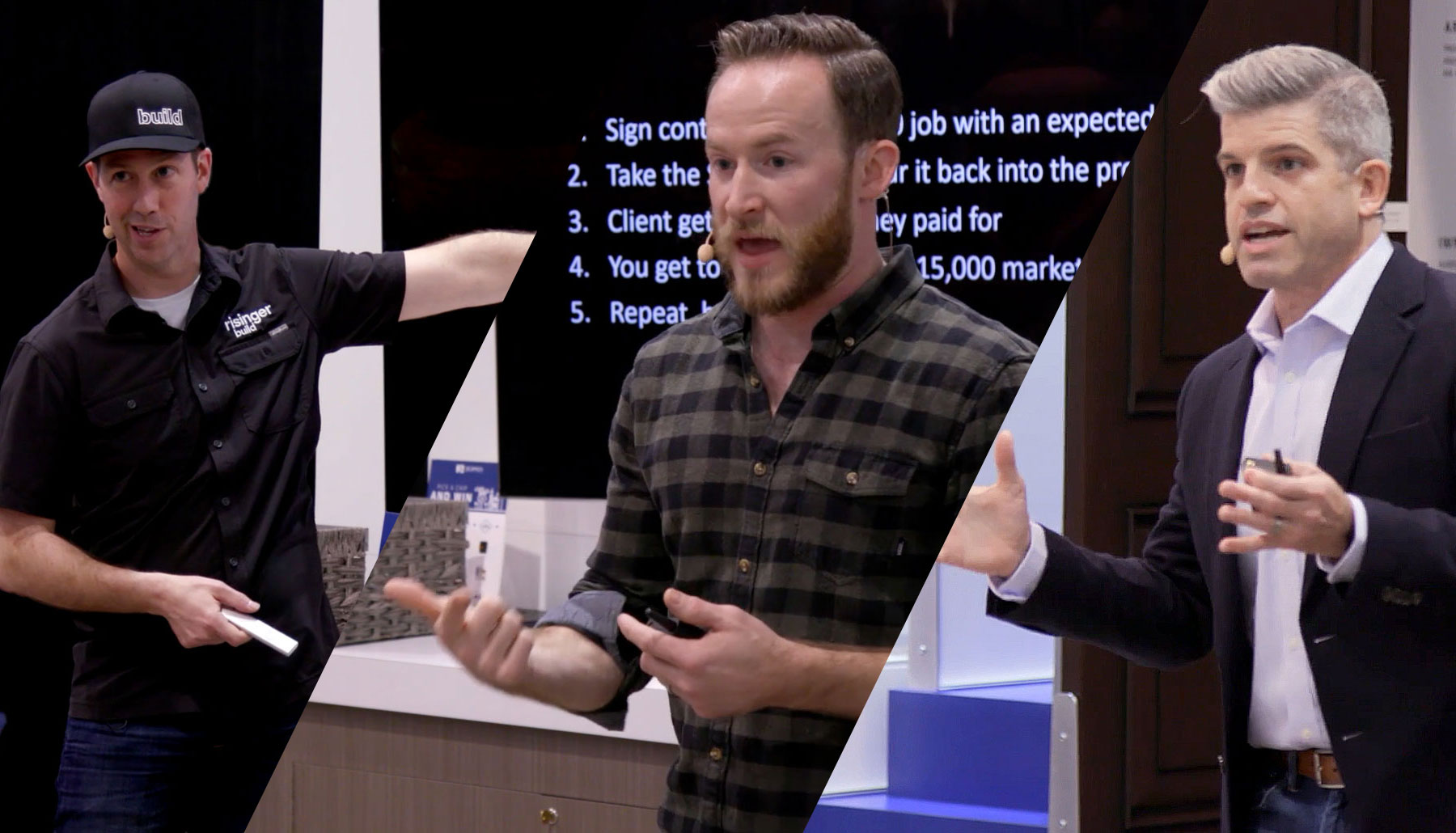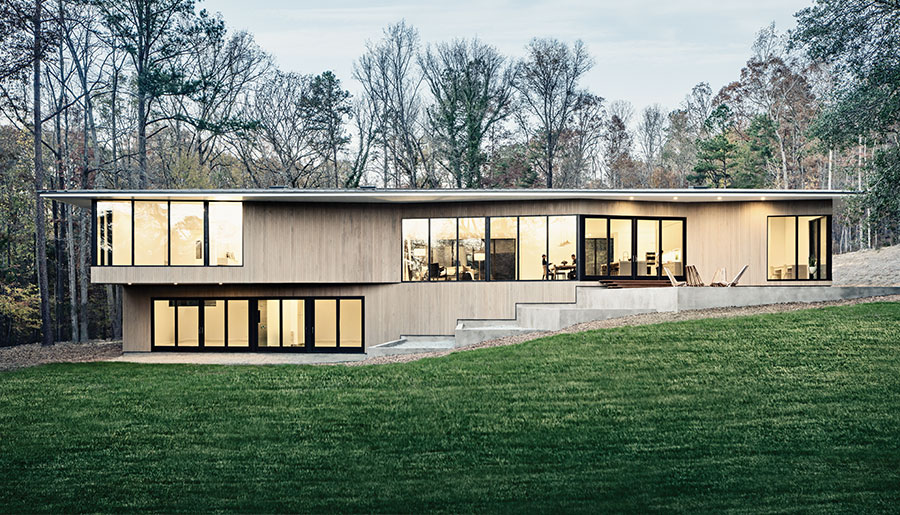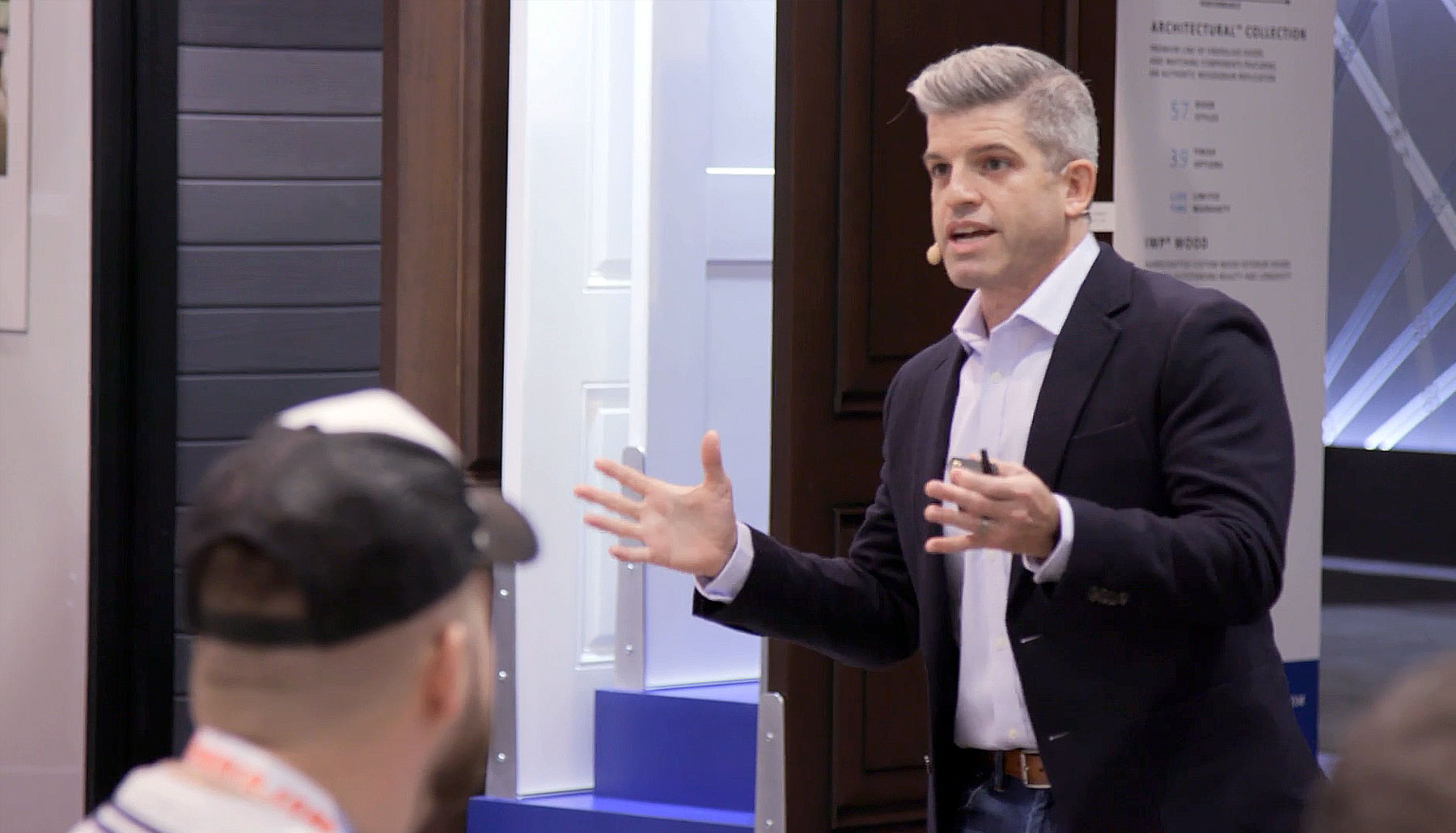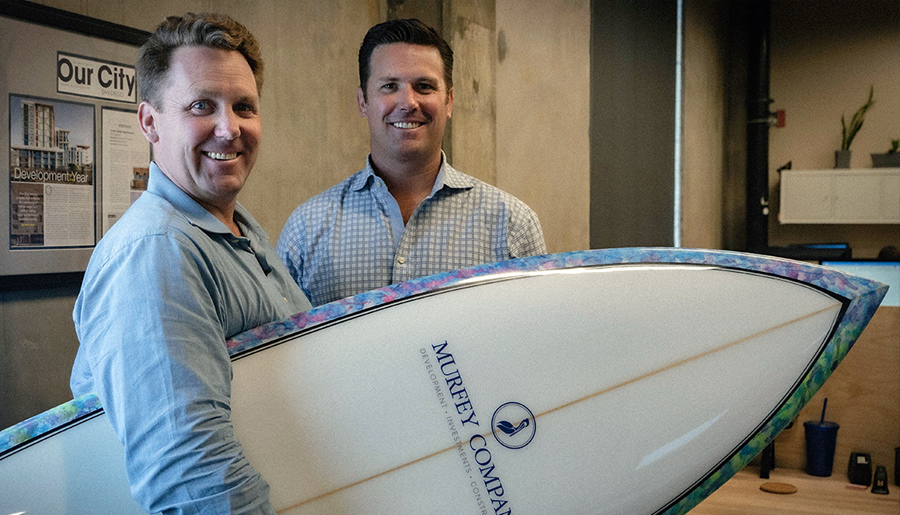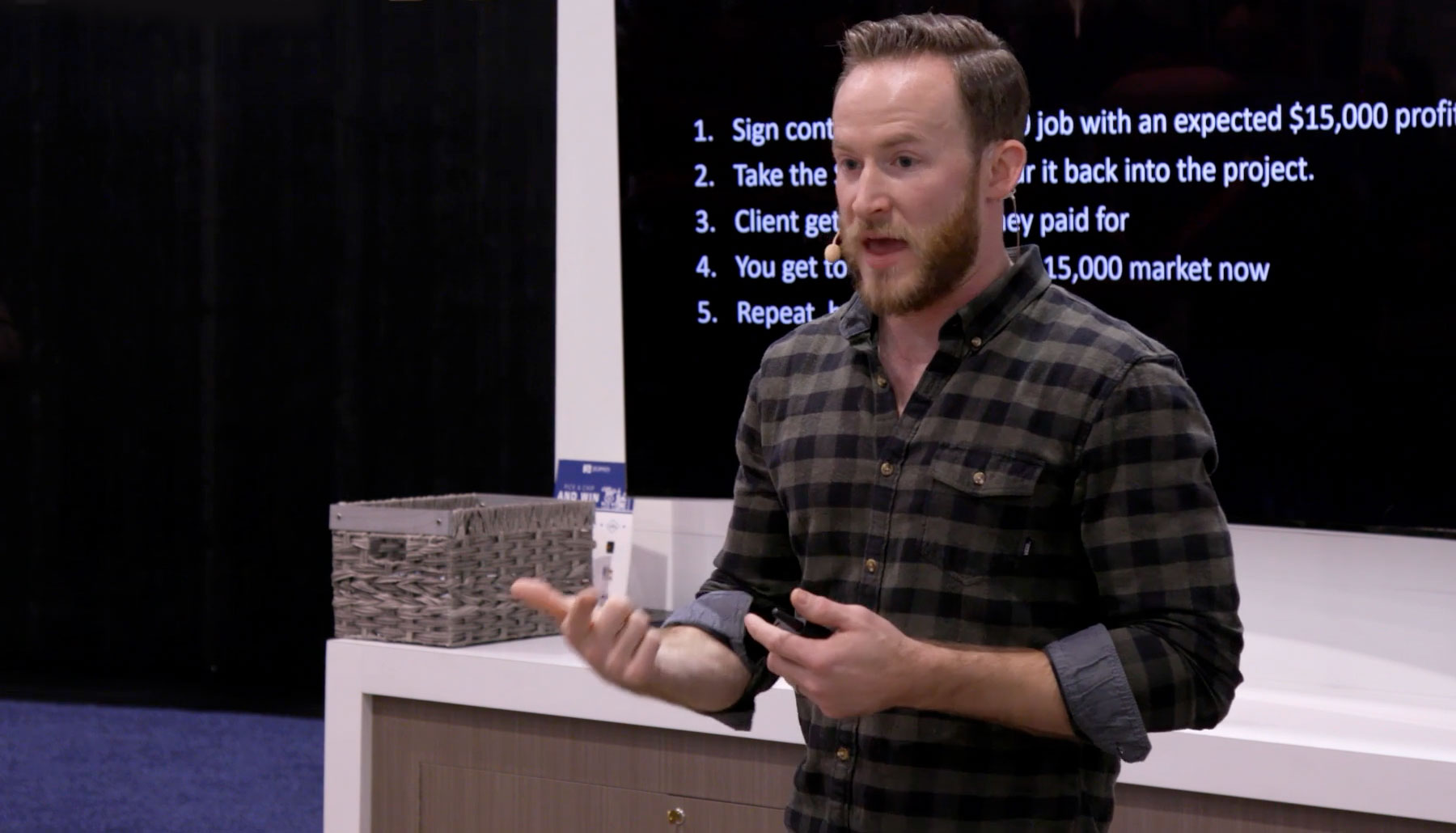Create unique homes for your clients with custom windows and doors Designing unique and meaningful homes is easier when you can fully customize your products. See how Paradigm Building Group, a full-service design-build residential construction firm, uses custom JELD-WEN windows and doors to build homes that fit their clients’ lifestyles while setting their business apart. For assistance with window and door specifications or installation, visit JELD-WEN’s professional portal. Check out the JELD-WEN pro site for more information.
A home for all ages marries accessibility and aesthetics that the whole family can appreciate. More homeowners are planning on their parents and adult children moving in with them. Studies show that the number of multigenerational households—defined as a home with more than two adult generations or grandparents and grandchildren younger than 25—is on the upswing. According to Pew Research Center, 2016 saw a record 20 percent of Americans living in multigenerational households,[1] compared to just 12 percent in the 1980s. And a recent survey by John Burns Real Estate Consulting says that as many as 41 percent of home-buying Americans are looking for homes that can accommodate an elderly parent or adult child.[2] What does this mean for builders and remodelers? A shift in demand and business model. Not only are more homeowners looking for more home, but there’s also the challenge of marrying accessibility features with design and…
An uplifting case study for builders everywhere. Every builder wants to build a home their client loves. What happens when builders and clients work alongside one another to bring a vision to life? That’s how Paradigm Building Company, a full-service design-build residential construction firm, approached a job in Arlington, Virginia. See how Paradigm and their client transformed an existing floorplan into an incredible sanctuary. For assistance with window and door specifications or installation, visit JELD-WEN’s professional portal. Check out the JELD-WEN pro site for more information.
Get expert insight on building a better business today.
Technologies and business practices from other industries can be game changers for home building Brought to you by JELD-WEN It’s easy to criticize some builders’ resistance to new technology, but given the complexities of this business and the huge financial risks, their hesitance is understandable. Established methods can seem safer and more predictable than changes that may or may not pay off. However, a growing number of builders understand that their survival will ultimately depend on their willingness to adopt new business practices and technologies. These practices usually aren’t complicated. In fact, they tend to be proven, mainstream, and even obvious. The key is having the mind-set to embrace them. Case in point: Russ and Scott Murfey of San Diego‒based Murfey Company, a 10-year-old builder/developer of single and multifamily homes and commercial projects, say that the careful application of new technologies and ideas has helped them build a thriving business. 1. Going…
This engineered approach to code compliance is becoming more popular as builders understand its benefits. Brought to you by JELD-WEN When it comes to energy code compliance, the performance path is the road less traveled, but that’s changing as builders learn more about its advantages. The prescriptive path, historically the more common approach, has the builder adhere to a specific set of construction details and get them confirmed by an inspector. “It has been our experience that the majority [of builders] go prescriptive,” writes Ekotrope, a company that makes energy simulation software. The prescriptive path long made sense for many builders: there’s no need to change architectural designs or purchasing processes. The move to performance started in 2009 when the code began mandating R-20 walls for the prescriptive path, which would have required builders to upgrade from 2×4 to more-expensive 2×6 walls. Why companies are moving to the performance path…
You know your worth. Here’s how to pitch it. Shawn Van Dyke has been a contractor, construction business owner, and coach for more than 20 years. He helps builders be as confident in their business as they are in their craft. In this exclusive video, Shawn shares tactics you can use right now to increase your profits and win clients, including proven methods to prequalify your leads and how to effectively pitch your value. Check out the JELD-WEN pro site for more information.
A commitment to one’s community is the best foundation for success Brought to you by JELD-WEN True Champion Builders are invested in the communities in which they live and work. They bring a deep connection to the area that drives their thinking about what projects to take on and how to execute them. For more than a decade, the Murfey Company has been just such a builder by being a thoughtful resident and civic partner for the greater San Diego area. Owned by brothers Russ and Scott Murfey, the Murfey Company is a vertically integrated builder specializing in urban infill mixed use. This typically includes apartment buildings, but unlike many builders, every Murfey development also includes some affordable housing aspect. Such a commitment provides a huge benefit in a city like San Diego struggling with a stubborn housing crisis. In addition to their urban infill projects, the Murfeys also take on…
Nick Schiffer is the owner of a full-service home building company, NS Builders. In this exclusive video, he shares his method for entering bigger markets, opens up about overcoming client obstacles, and explains why leading by example is the best strategy for your business and the industry. Check out the JELD-WEN pro site for more information.
Some industry pros share their strategies for pursuing high performance. Brought to you by JELD-WEN The path to a high-performance or net zero home is a well-trod one. It’s supported by proven building science principles refined over decades. These principles apply to remodeling as well as to new construction. The path to net zero is pretty straightforward: Create a super-efficient building shell with lots of insulation, low air leakage, and the best windows and doors possibleAdd high-efficiency HVACUse nontoxic materials and install fresh air ventilation But your results are all about the details. Here are some ideas to help you get started with net zero or improve your next net zero project. 1. Study and learn Start with training. Done wrong, tight construction can create moisture or air quality problems. To avoid them, get some good basic training. Not sure where to begin? Both of these organizations offer classes in applied…

